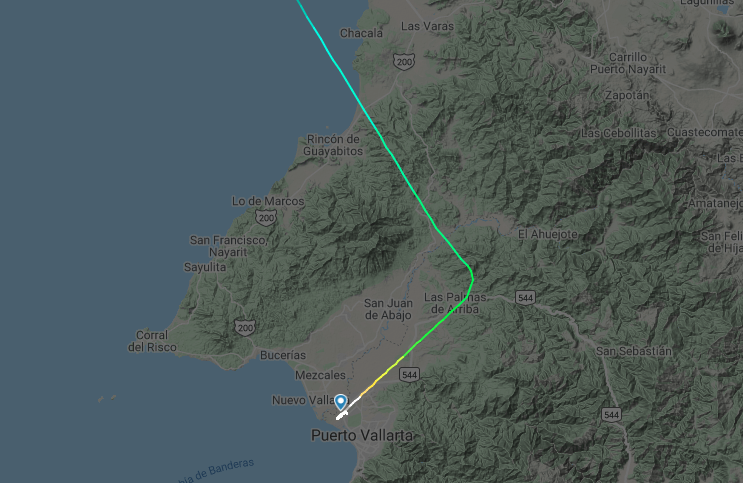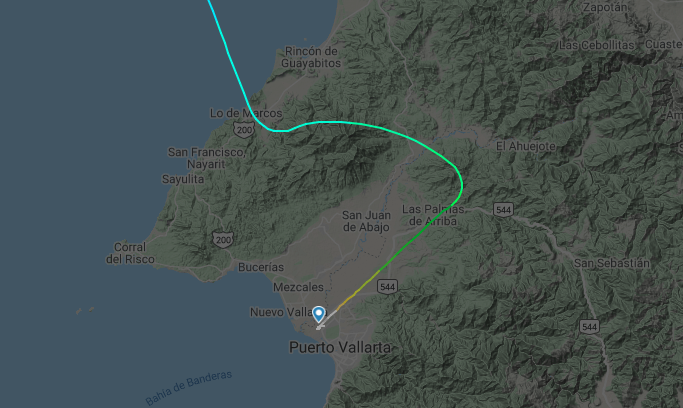Puerto Vallarta (MMPR) has a VOR/DME on the field (PVR), which is used in seven different approaches (that I can find) depending on where you're coming from and which runway you're landing on:
- VOR DME 1 Rwy 04 (Teardrop)
- VOR DME 2 Rwy 04 (DME arc from NW)
- VOR DME 3 Rwy 04 (DME arc from SE)
- VOR DME 1 Rwy 22 (Teardrop)
- VOR DME 2 Rwy 22 (DME arc from NW)
- VOR DME 3 Rwy 22 (DME arc from SE)
- VOR Rwy 04 (Procedure Turn)
Your abnormal flight seems to exactly match the VOR DME 2 Rwy 22 coming from BLASK on airway V1/J141. So yes, that was the intended flight path.
What's interesting is that your normal flights don't match any of the procedures. I suspect that ATC is vectoring those planes to final, which saves the time, fuel and effort of flying a DME arc, teardrop or procedure turn.
If ATC can do that, though, why did that one flight do the DME arc as charted? It's possible ATC was too busy to vector at that time, or their radar was down, or there was a radio problem, or the pilot requested the full procedure to maintain proficiency, or something else. Without a recording of the ATC frequency, it's hard to say.

 Do you think that was the intended flight path or they suddenly realized they need to be further to the left ?
Do you think that was the intended flight path or they suddenly realized they need to be further to the left ?